 The Columbia City Yoga on-line Moving into Meditation class met this morning. In this week’s class we explored spiritual cross training: waking up and growing up. We can wake up to the expanded state of pure awareness through meditation. We can nurture emotional maturity through feeling emotions in the body and learning what they have to teach us. We can restore a sense of coherence in body and mind through conscious breathing.
The Columbia City Yoga on-line Moving into Meditation class met this morning. In this week’s class we explored spiritual cross training: waking up and growing up. We can wake up to the expanded state of pure awareness through meditation. We can nurture emotional maturity through feeling emotions in the body and learning what they have to teach us. We can restore a sense of coherence in body and mind through conscious breathing.
We can find commonalities and connect through difference by strengthening communication skills.
We heard Diana Musho Hamilton’s teachings on how the expanded states we cultivate in meditation can be applied in the world through developing interpersonal skills. She calls this waking up and growing up. You can see last week’s interview, Cross Training for the Mind, with podcast journalist, Dan Harris at Cross Training for the Mind. You can find her breathing with strong emotions practice in her book, Compassionate Conversations: How to Speak and Listen From the Heart.
We heard from To Begin With, the Sweet Grass by Mary Oliver. This poem is from the collection, Evidence: Poems. Mary paints pictures in words that land in our heart, flesh and bones. They move us beyond the edges of our skin, to “become a child of the clouds,” to love ourselves and to love the world.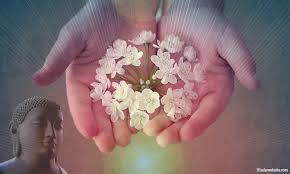
Guided Reflection
Welcome. In last week’s class we explored the ways we find meaning. We gather around the “kitchen table” of our practice to share stories and to practice present moment awareness. Words are fundamental to the stories we share. Present moment awareness is fundamental to our felt sense of being. Our miraculous consciousness enables us to communicate and promote mutual flourishing.
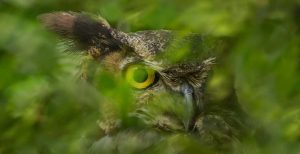 This week I was reminded that present moment awareness involves keeping my heart open in moments I would rather turn away. This means hearing the heart breaking stories of people who are illegally deported and imprisoned under inhumane conditions. This also means taking social action to seek accountability and to advocate for human rights. This can feel overwhelming at times. Where to begin?
This week I was reminded that present moment awareness involves keeping my heart open in moments I would rather turn away. This means hearing the heart breaking stories of people who are illegally deported and imprisoned under inhumane conditions. This also means taking social action to seek accountability and to advocate for human rights. This can feel overwhelming at times. Where to begin?
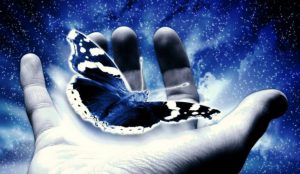 I turned to the work of Diane Musho Hamilton. Diane is a meditation teacher, profession conflict mediator and writer. She offers ways of taking meditation out into the world through our interpersonal relations. She calls this “spiritual cross-training.” It begins with establishing mindfulness. Practicing mindfulness helps us to wake up through a direct experience of our inter-relatedness. Diane describes this is as an expansive state of being part of everything. Our attention is freed to expand beyond the everyday sense of separation. This experience is often accompanied by a sense of relaxation and a quality of trust.
I turned to the work of Diane Musho Hamilton. Diane is a meditation teacher, profession conflict mediator and writer. She offers ways of taking meditation out into the world through our interpersonal relations. She calls this “spiritual cross-training.” It begins with establishing mindfulness. Practicing mindfulness helps us to wake up through a direct experience of our inter-relatedness. Diane describes this is as an expansive state of being part of everything. Our attention is freed to expand beyond the everyday sense of separation. This experience is often accompanied by a sense of relaxation and a quality of trust.
Diane explains this waking up experience is a good foundation for growing up. In a recent interview she describes how we can enhance the quality of our lives this way:
Meditation actually creates this . . . open space in the mind that really supports our learning. We become better learners. So if what we’re interested in is transformation of the quality of our life and our ability to contribute to others in a new way and to feel our life force and to actively be able to engage our creativity, then meditation is the most important foundation for all of that.
Growing up is actually developing the skills and the capacities and different behaviors that we need to support us in our journey, you might say.
 These are skills that Diane has honed as a mediator and in her personal relationships: learning to listen and clarify your message, to express concern for others and reveal who you are to others. This involves cultivating emotional maturity which Diane describes how we often go react to “raw feeling” by either avoiding, not expressing it or by over-identifying with feeling and over-expressing it. There are ways we can learn:
These are skills that Diane has honed as a mediator and in her personal relationships: learning to listen and clarify your message, to express concern for others and reveal who you are to others. This involves cultivating emotional maturity which Diane describes how we often go react to “raw feeling” by either avoiding, not expressing it or by over-identifying with feeling and over-expressing it. There are ways we can learn:
. . . how to capture what is inherent in feeling and emotion, which is life force and energy, which is a form of intelligence and which is a lot of information. So it’s important to be able to feel and really take in what it is the feeling states are giving us because they’re more fundamental than our cognition . . . They communicate much more readily and quickly.
In the practice Diane teaches:
. . . there’s a definite moment where you hit pause on the story and you move exclusively into the body. You really explore what the emotion and feeling states are in the body with cognition on pause. Because what’s happening is the story fuels the body and the bodily sensations, and the bodily sensations fuel the story.
So if you hit pause on the story, you breathe and you feel. What happens is a certain kind of coherence enters into the body and the mind. Then you’ll find your thinking actually becomes more positive or more workable, you might say.
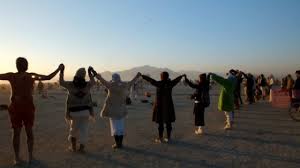 This seems like valuable preparation for ethical action and living in community. I hope to integrate this practice into those moments when my heart surges over the many incidents of cruelty and destruction in the world.
This seems like valuable preparation for ethical action and living in community. I hope to integrate this practice into those moments when my heart surges over the many incidents of cruelty and destruction in the world.
Mary Oliver’s poem, To Begin With, the Sweet Grass, helps me to keep loving.
…eventually tides will be the only calendar you believe in…
And someone’s face, whom you love, will be as a star
Both intimate and ultimate,
And you will be heart-shaken and respectful.
And you will hear the air itself, like a beloved, whisper
Oh let me, for a while longer, enter the two
Beautiful bodies of your lungs…
Look, and look again.
This world is not just a little thrill for your eyes.
It’s more than bones.
It’s more than the delicate wrist with its personal pulse.
It’s more than the beating of a single heart.
It’s praising.
It’s giving until the giving feels like receiving.
You have a life- just imagine that!
You have this day, and maybe another, and maybe
Still another…
And I have become the child of the clouds, and of hope.
I have become the friend of the enemy, whoever that is.
I have become older and, cherishing what I have learned,
I have become younger.
And what do I risk to tell you this, which is all I know?
Love yourself. Then forget it. Then, love the world.
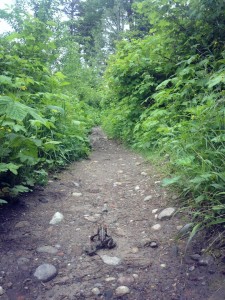 Mary’s words seem to “capture what is inherent in feeling and emotion, which is life force and energy, . . . a form of intelligence.” I want to “to feel and really take in . . . the feeling states [our emotions] are giving us.” We are invited to enter the story and then pause, feel and breathe.
Mary’s words seem to “capture what is inherent in feeling and emotion, which is life force and energy, . . . a form of intelligence.” I want to “to feel and really take in . . . the feeling states [our emotions] are giving us.” We are invited to enter the story and then pause, feel and breathe.
In practice, we can go beyond the story. We stretch time and enter stillness. How is your body making itself known to you? Can you notice a sense of settling? Begin to notice the body steadying itself. It may be a slow gradual shifting into stillness. Notice the qualities of stillness.
There is movement as well as stillness in the body. You can sense the movement of breathing. Feel the pulses of inhaling and then exhaling. There may be emotions. Be curious about them. Locate them in the body. Feel texture or tone. In a heightened state, there may be tension in the shoulders, throat or neck or jaw. Unease in the belly.
Let these sensations be known. Let the breath be known. If you like you can invite the breath to become rhythmic and smoothe. Invite the in-breath and out-breath into an interval. Inhaling smoothly over a count of 1, 2, 3, 4; exhaling just a bit longer 1, 2, 3, 4, 5, 6. Slowly, smoothly creating an interval, a rhythmic cycle. Rhythmic and smoothe, the breath helping you to stay present with shifting sensations in the body.
 In time you might sense “a certain kind of coherence” developing in body and mind. The breath is moving. The body may be gradually stilling. Can you feel stillness and movement? Let body and breath be known. Let stillness and movement be known. In time, you might become more intimate with the breath. Or perhaps “. . . you will hear the air itself, like a beloved, whisper. Oh let me, for a while longer, enter the two beautiful bodies of your lungs…”
In time you might sense “a certain kind of coherence” developing in body and mind. The breath is moving. The body may be gradually stilling. Can you feel stillness and movement? Let body and breath be known. Let stillness and movement be known. In time, you might become more intimate with the breath. Or perhaps “. . . you will hear the air itself, like a beloved, whisper. Oh let me, for a while longer, enter the two beautiful bodies of your lungs…”
Notice how your body is experiencing calm and ease however small. Bring your full awareness to the experience of calm. If this is difficult or creating tension – take a deeper breath and let it go. Relax your mind if you can.
How is it for you to trust this ever unfolding present? Again and again we step into the unknown and we trust. We trust the next incoming breath or sound. We surrender in the quiet moments of our choosing – sometimes in the midst of struggle. Experience dissolves and emerges in an instant. In loving awareness we begin to appreciate the mystery of what arises and passes away.
If we give ourselves enough time and loving awareness, our inner turmoil may spend itself out like a long rolling wave unfurling. Every emotion has its own ebb and flow. In riding those waves we come to know ourselves as we live with impermanence and the unknown. As we allow the truth of our experience to be known, we may also realize our inter-relatedness. I am because we are. In time and the kinship of loving awareness, we may come to know what is needed.
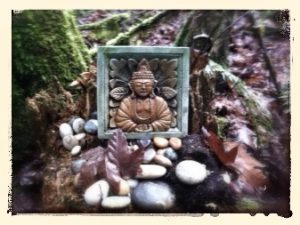 Our simple and profound practice helps us to find stillness and movement. It helps us to be with what is emerging. We are present with what is emerging. We are Life expressing itself in form, feeling, thought and spirit. The ever changing nature of experience is revealed in unpredictable and surprising ways. We can “look, and look again.” Feel and feel again. This world that is more than bones. More than the beating of a single heart. We “have this day, and maybe another, and maybe still another.”
Our simple and profound practice helps us to find stillness and movement. It helps us to be with what is emerging. We are present with what is emerging. We are Life expressing itself in form, feeling, thought and spirit. The ever changing nature of experience is revealed in unpredictable and surprising ways. We can “look, and look again.” Feel and feel again. This world that is more than bones. More than the beating of a single heart. We “have this day, and maybe another, and maybe still another.”
